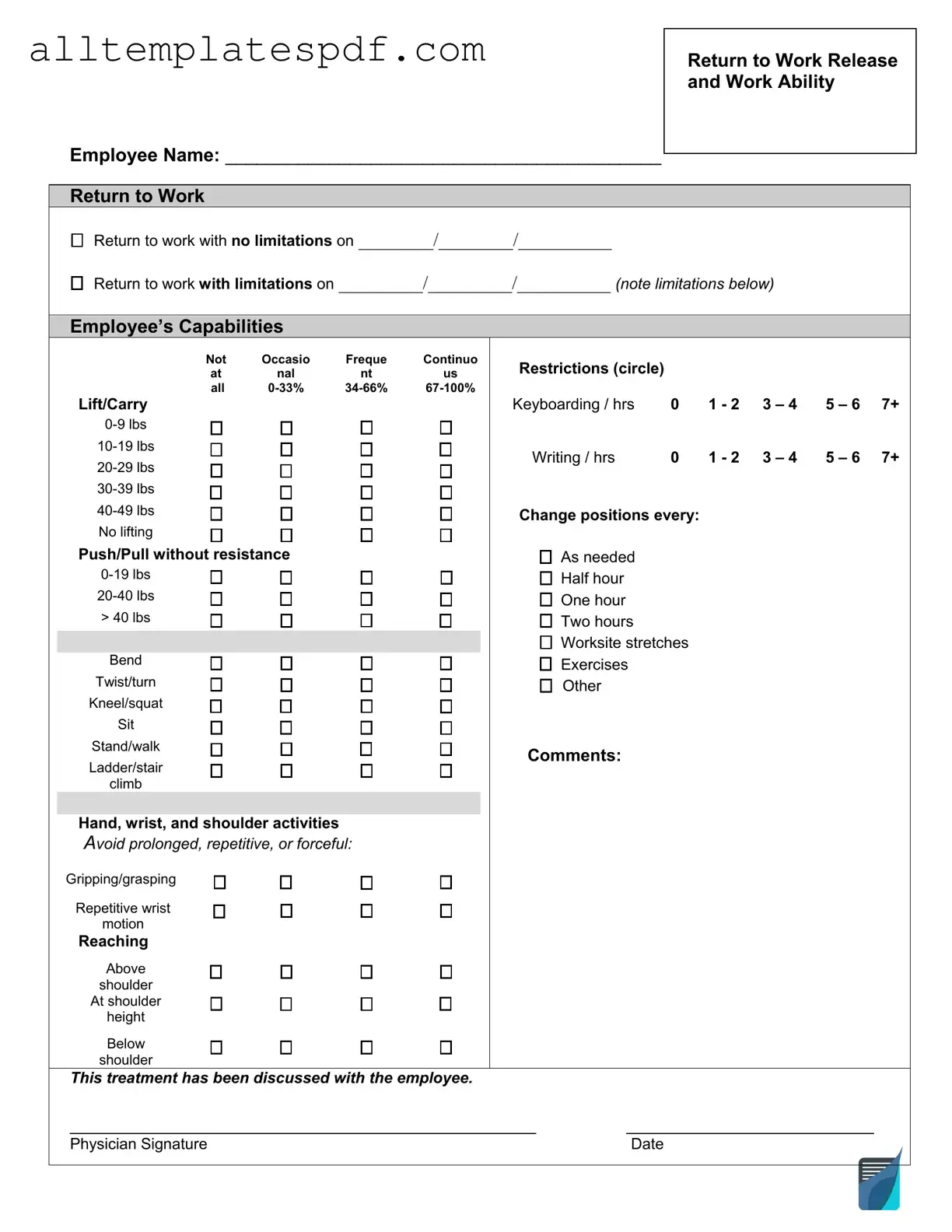Filling out a Work Release form can be straightforward, but many people make common mistakes that can lead to delays or complications. One frequent error is failing to provide complete personal information. Ensure that your name, address, and contact details are accurate and fully filled out. Incomplete information can result in processing issues.
Another mistake is not clearly stating the purpose of the work release. It’s essential to specify why you need to be released from your usual obligations. A vague explanation can lead to misunderstandings and may cause your request to be denied.
People often overlook the importance of signatures. Omitting a signature or providing an outdated one can invalidate the form. Always double-check that all required signatures are present and current.
Some individuals mistakenly submit the form without reviewing the guidelines. Each organization may have specific requirements for the Work Release form. Familiarize yourself with these guidelines to avoid unnecessary rejections.
Inaccurate dates can also pose a problem. When filling out the form, be sure to include the correct dates for the requested work release period. Errors in dates can lead to confusion and may affect your eligibility.
Another common oversight is neglecting to attach necessary documentation. Supporting documents, such as proof of employment or medical records, may be required. Failing to include these can delay the approval process.
Finally, some people submit the form without following up. After submission, it’s wise to check in with the appropriate department to confirm receipt and inquire about the status of your request. This proactive approach can help ensure that your application is processed in a timely manner.
